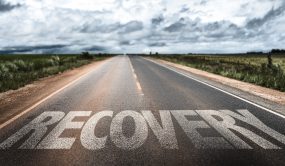Total Worker Health in Action
Volume 9 Number 3 September 2020
Update on the Coronavirus Disease 2019 (COVID-19) Response
While the NIOSH Total Worker Health (TWH) Program will continue to share important updates about TWH research and activities in our quarterly TWH in Action! eNewsletter, you can stay up to date on the COVID-19 response in real time on the COVID-19 webpage or sign up for the COVID-19 newsletter.
Director’s Buzz
L. CASEY CHOSEWOOD, MD, MPH
As we adapt to a changing landscape, the concepts of Total Worker Health (TWH) are more relevant than ever. Changes in employment and workplace environments, work arrangements, working conditions, and social and community supports, all serve as a reminder of how broader, societal, and economic factors impact worker safety, health, and well-being.

By recognizing the impact of nonwork conditions on worker health, organizations can design work to better protect workers from hazards and advance their health and well-being. For example, our recent NIOSH Science blogs featured here in the publications and resources section discuss multiple issues relevant to today’s workers, including stress and decreased economic security, offering solutions for employers and workers. Additionally, the Promising Practice this quarter tells us how organizations are adapting to new challenges by broadening the ways that they protect workers. The TWH approach recognizes the role of organizational and supervisor support, and the benefits of this approach impact not only workers but employers and communities. This is a critical time for all of us to rise to the challenge of keeping workers safe. Let’s all stay focused and strong as we tackle this together.
Total Worker Health Exclusive
Supporting Workers and Employers During COVID-19: TWH and Healthy Work Design Experts Weigh In
To address evolving challenges related to worker safety, health, and well-being, the TWH program identified priority areas that are currently relevant to advancing worker well-being. Healthy Work Design and Well-Being is one of the areas that provides additional guidance for both short- and long-term TWH efforts and offers an important perspective during the coronavirus disease 2019 (COVID-19) pandemic. A TWH approach emphasizes the fundamental role that high-quality work and healthy work design play in keeping workers safe and healthy regardless of the challenges that come their way.
Features
News from the Field
Quarterly Updates
To receive the NIOSH TWH email newsletter, enter your email address:

The mission of the NIOSH Healthy Work Design and Well-Being Program is to protect and advance worker safety, health, and well-being by improving the design of work, management practices, and the physical and psychosocial work environment. The program emphasizes collaboration among labor, trade, and other industry associations, along with professional associations, and occupational safety and health researchers. Current priorities include research and interventions for occupational stress, long working hours and fatigue, and non-standard work arrangements (such as temporary agency, contract, and gig arrangements). Addressing these critical issues is more urgent than ever amid the pandemic.
A recent blog series sponsored by the Healthy Work Design and Well-Being (HWD) Program highlights work-related factors impacted by the COVID-19 pandemic. Reducing occupational stress, supporting worker well-being through healthy work design, and recognizing economic aspects of overall health and well-being are fundamental to HWD. These NIOSH Science Blogs, provide information and solutions for workers and employers on these topics:
- COVID-19 Stress Among Your Workers? Healthy Work Design and Well-Being Solutions Are Critical
- The Role of Organizational Support and Healthy Work Design
- Economic Security during the COVID-19 Pandemic: A Healthy Work Design and Well-being Perspective
- Improve Sleep: Tips to Improve Your Sleep When Times Are Tough
Additional resources related to COVID-19 in the workplace are available on the NIOSH website. Information is also available to assist employers and workplaces as they reopen and resume operations while prioritizing the health and well-being of their workers and customers. A recording of a recent webinar, Reopening America: Return to the Workplace Safely with Total Worker Health Strategies, is now available for on-demand viewing. In this webinar, NIOSH speakers discussed science, strategies, and recommendations for returning to work safely as organizations meet the challenges of the COVID-19 pandemic.
Promising Practice
Under the Hard Hat: Addressing Mental Health in the Construction Industry
Editor’s Note: The NIOSH Office for Total Worker Health developed this feature with co-author Jonathan Oppenheim, Southeast Regional Construction Leader, Willis Towers Watson
The construction industry experiences some of the highest rates of suicide. One in five adults experience a mental illness in their lifetime, and 57% of construction workers have experienced a mental health issue during their career in the industry. To address this concern, Willis Towers Watson partnered with Suicide Awareness Voices of Education (SAVE) to develop a state-of-the-art mental health education and suicide prevention training program. Through this partnership, Willis Towers Watson is transforming how mental health is addressed in the construction industry.

Dr. Dan Reidenberg
Traditionally, risk control efforts in the construction industry neglect to address mental health and well-being and focus entirely on physical loss. This new program instead addresses psychological safety and well-being so that safety professionals and employers can protect the mental wellness of all employees. “At a time when this is most needed, Willis Towers Watson and SAVE have joined forces to create an innovative suicide prevention program to reach a hard-to-reach, yet high-risk population,” said Dr. Dan Reidenberg, SAVE’s Executive Director. “By using this multi-centered approach, we can improve safety on job sites and save lives.”
Ideal Body Environment and Mind (IBEAM) is a multi-faceted program that uses a combination of instructional videos, live presentations, and face-to-face teaching modules to enhance learning of core competencies. IBEAM uses a tiered approach to provide education and training for the entire workforce.
- Level One is designed for the entire workforce, to promote general awareness of mental health and self-recognition by those in crisis or at risk. Using educational videos in an online presentation allows for on-demand availability and helps all employees to build a foundational understanding of the program principles.
- Level Two is designed for foremen, managers, supervisors, and human resources professionals. This level teaches listening skills and how to direct those in need of help to resources. Education and skills-based training is provided to participants.
- Level Three is designed for principles, owners, and senior stakeholders. The training focuses on driving culture and ensuring that appropriate products and services are readily available to protect an organization’s employees.

Jonathan Oppenheim
The suicide rate in the construction industry illustrates an industry in crisis. The numbers are a powerful reminder of the work that needs to be done and of the people who suffer in silence. Evidence shows that stigma and shame prevent many people from speaking up and reaching out for assistance. “To break through the stigma and taboo surrounding the topic, it must be talked about with the entire labor force and made the subject of safety meetings and company communications,” said Jonathan Oppenheim, Willis Towers Watson’s Southeast Regional Construction Leader. “I view our partnership with SAVE, and all of the associated efforts, not as a choice, but as an obligation. Simply put, we cannot allow the mental illness crisis to continue. In the spirit of breaking the silence, Willis Towers Watson and SAVE provide the entire Level One suite available, at no cost, to the entire construction industry.” The videos can be accessed at www.willistowerswatson.com/underthehardhat. Levels Two and Three interactive training sessions will also soon be scheduled in both virtual and physical formats in various cities throughout the United States. Sessions will require reservation and will be made available on a first-come, first-served basis for 50 attendees per session.
Willis Towers Watson addresses factors that impact worker safety, health, and well-being, including key issues relevant to Total Worker Health, and recognizes that traditional risk control efforts must look beyond mental health. Efforts must address the external factors that can also contribute to suicide, such as job strain, sleep disruption, bullying or harassment, and other workplace and environmental stressors.
To learn more about the partnership and mental health in the construction industry, please visit www.willistowerswatson.com/underthehardhat.
Spotlight on Opioids in the Workplace
Editor’s note: If you or someone you know needs assistance (in English or Spanish) with mental health concerns and/or substance use disorders, prevention, and recovery, please contact SAMHSA’s National Helpline at 1-800-662-HELP (4357) or visit https://www.samhsa.gov/find-help.

NIOSH recently requested input on Workplace-Supported Recovery Programs (WSRPs) in a Federal Register Notice. In a WSRP, employers use evidence-based policies and programs to reduce multiple risk factors. A new web page is now available to provide information about WSRPs, including recommendations for cultivating a recovery-supportive workplace and reducing stigma. You can also find national, state, and organizational resources related to WSRPs.
You can learn more on the NIOSH Opioids in the Workplace web page and in this Director’s Desk, featured in the August edition of NIOSH eNews.
Updates from the NIOSH Centers of Excellence for Total Worker Health
To learn more about how the Centers of Excellence are responding to the emerging public health threat, visit their websites.
- The Center for Health, Work & Environment (CHWE) hosted a webinar about racism in the workplace, “When Good Intentions Aren’t Enough: How Racism Persists in Today’s Workplaces,” that had over 1,000 live-event attendees. View a recording of the webinar here. CHWE continues to partner with the Colorado Department of Public Health and Environment and community partners to improve worker health. Staff members are coordinating employer education breakfasts and one-on-one advising sessions, and they are developing case studies about Colorado employers who have offered Diabetes Prevention Programs to market their successes to the communities.
- The Center for the Promotion of Health in the New England Workplace (CPH-NEW) presented at the Occupational Health and Safety Industrial Hygiene Virtual Summit 2020. The presentation is now available on demand. CPH-NEW will begin developing and testing new technology to measure reactions to workplace violence among healthcare workers and corrections officers. Researchers plan to study stress reactions to understand how violent incidents in the workplace impact certain health indicators.
- The Harvard Center for Work, Health and Well-being was recently featured in the article “Will employers provide mental health care for essential workers?” To learn more about the featured research focused on workplace stress and worker health, read the article here.
- The Healthier Workforce Center of the Midwest (HWC) in collaboration with the National Children’s Center for Rural Agricultural Health and Safety, developed a set of resources for people who hire, teach, and supervise young agricultural workers. Resources are available in English and Spanish and include online training modules, classroom training materials, YouTube videos, and handouts.
- The Oregon Healthy Workforce Center (OHWC) presented a Spring Symposium on “Workplace Aggression: Preventing Relational Aggression and Bullying.” The recordings are now available online. OHWC also held the Occupational Health Psychology Summer Institute. Session recordings are available online. Congratulations to OHWC Co-Director Leslie Hammer and her long-term collaborator, Ellen Kossek! They were recently awarded the Ellen Galinsky Generative Researcher Award in recognition of their long-standing collaborative contributions to the area of work-family research. The award was presented through the Work and Family Researchers Network. Stay connected with OHWC on its new LinkedIn page.
- The University of Illinois (UIC)–Center for Healthy Work is conducting focus groups as part of the third phase of the Healthy Work Collaborative. The Center is also developing a Healthy Work Collaborative toolkit in partnership with the University of Illinois Project for Middle Class Renewal. The toolkit is designed for those interested in using a participatory action research process to address complex problems. The Center is also translating peer-reviewed articles and publications into simplified briefs to share research with broader audiences. These briefs will be posted on the website.
These are just a few of the updates from the NIOSH Centers of Excellence for Total Worker Health. To learn more about the program and each of the Centers, visit https://www.cdc.gov/niosh/TWH/centers.html.
News from NIOSH TWH Affiliates and Partners
Colorado Governor Declares August 20 Total Worker Health Day
Colorado Governor Jared Polis proclaimed August 20 as Total Worker Health Day in Colorado. Recognizing the impact of the TWH approach for the region, this is the second year that Governor Polis demonstrated the state’s commitment to worker health, safety, and well-being by making such a declaration. Learn more about how the state is celebrating TWH Day in this press release.
Southeastern Regional Affiliate Meeting
The Miami Occupational Research Group, a TWH affiliate at the University of Miami, hosted a virtual TWH Affiliate Regional Meeting on August 14, 2020. The purpose of the meeting was to introduce non-affiliates to the TWH program, share ideas and updates among partners in the southeast region, and discuss future opportunities for collaboration.
Statewide Illinois Affiliate Meeting
The UIC Center for Healthy Work, a NIOSH Center of Excellence for TWH, hosted the first meeting of statewide TWH Affiliates for members in Illinois. During the July meeting, members participated in an online dialogue to learn more about each organization’s efforts to address worker health. The group will continue to gather in ongoing quarterly meetings.
TWH Website Update
Visit the NIOSH Total Worker Health website to find updated content, including What is Total Worker Health?, Frequently Asked Questions, and History of Total Worker Health.
Webinar Series: Expanding Research Partnerships
This webinar series aims to promote the work of innovative and impactful intramural and extramural research partnerships. If you missed any of these free webinars, such as “Future of Work and Implications for Aging Workers” or “Developing Partnerships during a Pandemic,” visit the website for recordings to view on-demand.
To learn more about the Total Worker Health Affiliate program, visit https://www.cdc.gov/niosh/twh/affiliate.html.
New Publications and Resources
From CDC and NIOSH
Publications
The Role of Organizational Support and Healthy Work Design
COVID-19 Stress Among Your Workers? Healthy Work Design and Well-Being Solutions Are Critical
Economic Security during the COVID-19 Pandemic: A Healthy Work Design and Well-being Perspective
Improve Sleep: Tips to Improve Your Sleep When Times Are Tough
Cannabis and Work: Implications, Impairment, and the Need for Further Research
No Small Task: Understanding Safety and Health Motivators in Small Businesses
Resources
Reopening America: Return to the Workplace Safely with Total Worker Health Strategies (recorded webinar)
Future of Work and Implications for Aging Workers (recorded webinar)
What is Total Worker Health? (webpage)
Frequently Asked Questions about TWH (webpage)
History of Total Worker Health (webpage)
Workplace Supported Recovery (webpage)
New Publications and Resources from NIOSH Centers of Excellence for Total Worker Health
Bidirectional Relationships of Sleep and Work
Creatinine fluctuations forecast cross-harvest kidney function decline among sugarcane workers
Work Environment Factors and Prevention of Opioid-Related Deaths
The Work-Family Interface Around the World: Implications and Recommendations for Policy and Practice
Conferences, Webinars, and Training in Support of NIOSH Total Worker Health
September
15–16 Join CHWE at the American Industrial Hygiene Association’s Rocky Mountain Section Annual Conference. Learn more and register.
October
13 An interactive workshop, Stress and Mental Health, will review evidence-based best practices for dealing with many sources of work-related stress. Attendees will discuss various sources of work-related stress and learn proven strategies to better manage their stress levels at work. Learn more about the workshop on the CHWE events calendar.
November
12 Learn how to enhance the workplace culture, and other strategies to apply a TWH approach, in the interactive learning experience TWH Leadership 102. This training requires participation in the Center for Health, Work & Environment’s online, one-hour TWH Leadership 101 course, followed by a 1.5-hour workshop. Find out more and register.
Looking for more events? NIOSH has a new web page that provides a list of publicly available occupational safety and health–related conferences, meetings, webinars, and events. Events are sponsored by NIOSH, other government agencies, and non-government agencies such as universities, professional societies, and organizations.
Would you like to be featured in the next edition of the TWH in Action! eNewsletter? Share your story with us, or provide input on previous editions, at twh@cdc.gov!
Contributors
L. Casey Chosewood, MD, MPH, Executive Editor
Emily Norton, Managing Editor
Sarah Mitchell, Associate Editor
Seleen Collins, Copy Editor
Kelly Hinners, NIOSH Web Developer
Steve Leonard, NIOSH Web Publisher
Please send your comments and suggestions to us at twh@cdc.gov.
This newsletter is published quarterly via email by the National Institute for Occupational Safety and Health Total Worker Health® Program to inform members of the public health community as well as interested members of the general public of program-related news, new publications, and updates on existing activities and initiatives.
Mention of any company or product does not constitute endorsement by the National Institute for Occupational Safety and Health, Centers for Disease Control and Prevention. In addition, citations to websites external to NIOSH do not constitute NIOSH endorsement of the sponsoring organizations or their programs or products. Furthermore, NIOSH is not responsible for the content of these websites. All web addresses referenced in this document were accessible as of the publication date.

